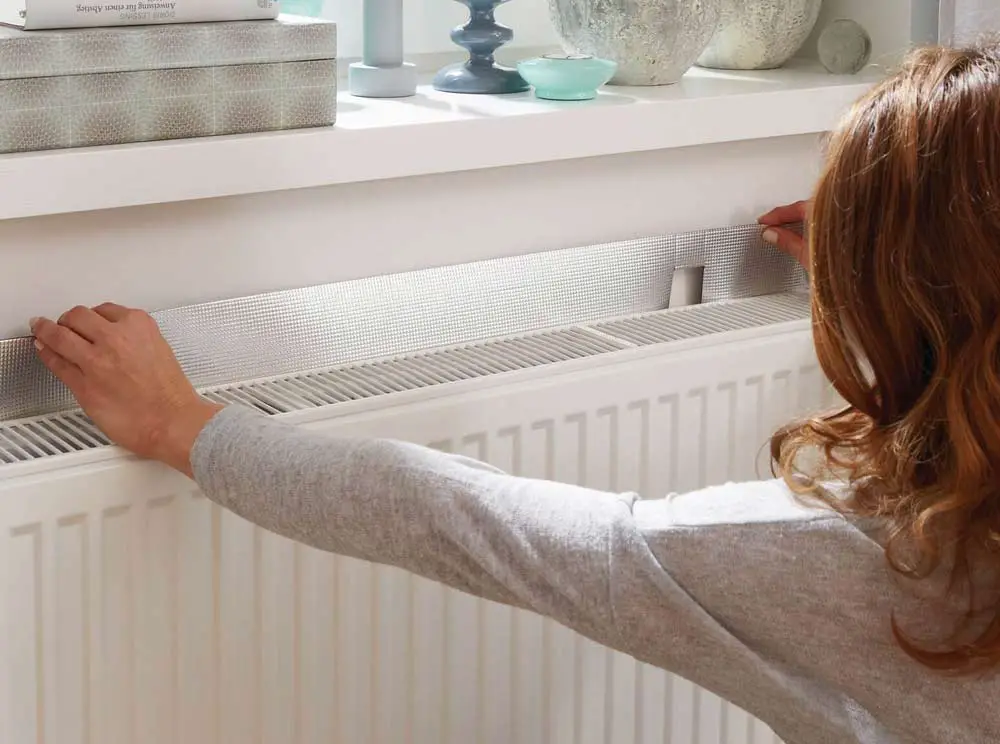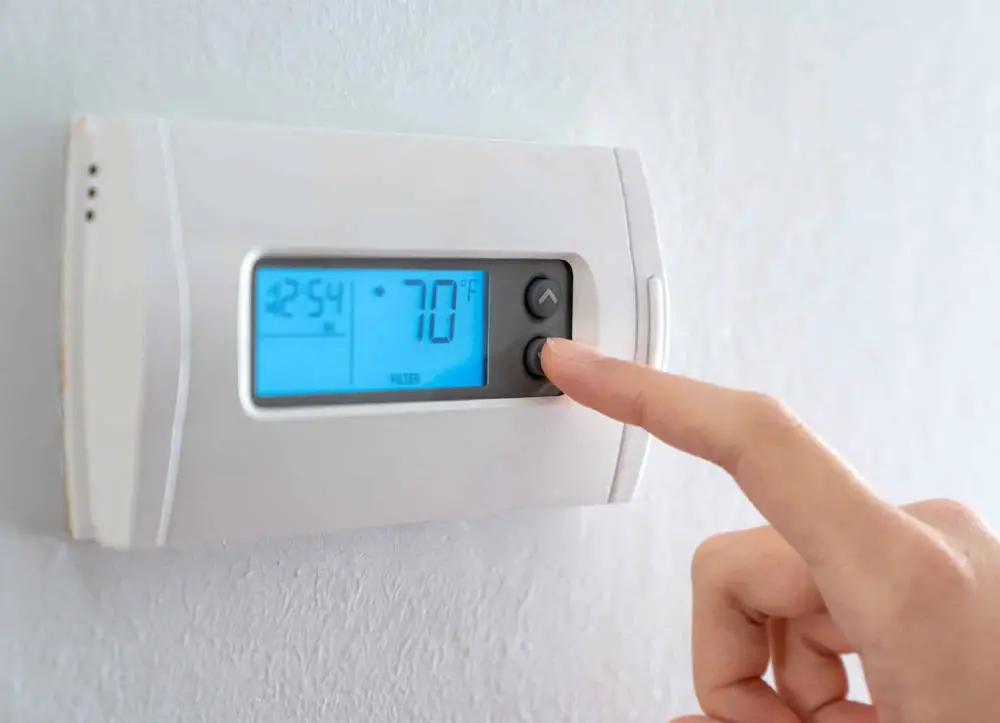You might have heard about the idea of using aluminium foil as a DIY solution for saving money on energy bills, but does it work as a credible heat reflector?
Let's delve into the science behind it and see if this common hack holds up to its claims.
Does Kitchen Foil Behind Radiators Work?

Image credit: degroenebox.nl
Putting kitchen foil behind your radiators may offer some minimal benefits for the reflection of heat, but it is certainly not the most effective solution.
While tin foil has reflective properties and can reflect some heat back into the room, it lacks the thickness and specialised design of purpose-made alternatives and therefore a significant portion of the heat will still be absorbed by the wall.
In contrast, radiator reflectors are specifically engineered to maximise heat reflection while also minimising heat absorption, resulting in bigger and more worthwhile energy savings over time.
So, for an optimal reduction in heating bills and to enhance energy conservation, it is highly recommended that you invest in dedicated heat reflectors or ready-to-use foil radiator panels.
Heat Reflectors and Their Impact on Energy Bills
Before we explore the efficacy of putting foil behind your radiators, it's essential to understand what a radiator reflector does and how it can impact your energy bills.
Radiator foil is a reflective material or panel that is placed on the wall behind radiators in a home or office. Their purpose is to reflect the heat emitted from behind the radiator back into the room, preventing it from being absorbed by the walls.
This process ensures that more of the heat circulates within the room, making it feel warmer and reducing the energy needed to maintain a comfortable room temperature.
How Does a Radiator Reflector Work?

Image credit: tesa.com
To comprehend the science behind radiator reflectors, you first need to understand the concept of heat transfer. When a radiator emits heat, it travels in all directions. Some of it warms the air in the room, while a significant portion is absorbed by the walls, especially those that are uninsulated.
The absorbed heat causes the wall to act like a sponge, sucking in and dissipating the warm air. As a result, your heating system works harder and stays on for longer to compensate for the heat loss. This continuous cycle leads to increased energy consumption and higher heating bills.
Recommended Solutions for Energy Efficiency
If you're interested in ways to optimise your energy consumption and reduce your energy bills, you may want to also consider the following solutions:
Cavity Wall Insulation

Image credit: buyinsulationonline.co.uk
If possible, insulate your outside walls, internal walls and party walls with proper insulation materials. This will significantly reduce heat loss and improve the overall energy efficiency of your home.
Seal Air Leaks

Image credit: synergycompanies.com
Identify and seal any air leaks around doors, windows, and other openings. Properly insulated homes retain heat better, reducing the workload on your heating system, and thus cutting down energy bills.
Upgrade to LED Lighting

Image credit: livinator.com
Replace traditional incandescent bulbs with energy-efficient LED lights. LEDs consume much less electricity than standard alternatives, have a longer lifespan, and emit less heat, making them an excellent choice for reducing energy consumption.
Use Energy-Efficient Appliances

Image credit: candy-home.com
When purchasing new appliances, opt for those with the Energy Star label and are A or B-rated. These appliances are designed to consume less energy, saving you money on your electricity bills.
Install Programmable Thermostats

Image credit: theplumbingworks.com
Programmable thermostats allow you to set specific temperatures for different times of the day, ensuring your heating and cooling systems run only when needed. This helps to optimize your energy usage and reduces unnecessary heating or cooling.
Use Window Treatments Wisely
Rather than just opening all your windows or blinds when you get up in the morning, and closing them at night, Be more selective based on the weather conditions outside.
During hot days, you want to close curtains and blinds to block out the sun, thus keeping your home cooler. In contrast, through colder months, open them during the day to allow sunlight in and close them at night to retain the heat.
Conclusion
While the idea of putting tin foil behind a radiator to serve as a heat reflector might sound appealing, it may not deliver the substantial energy-saving benefits you desire.
To effectively save money on your heating bills, consider investing in purpose-built radiator reflectors or other energy-efficient solutions.
Frequently Asked Questions (FAQs)
How many radiator reflectors do I need for my home?
The number of radiator reflectors you need depends on the number of radiators in your home. For optimum energy savings and efficiency, aim to place a reflector behind each radiator.
Can radiator reflectors work with insulated cavity walls?
Yes, radiator reflectors can still be beneficial even if you have insulated cavity walls. They will help to further reduce heat loss through your external walls.
Is using kitchen foil behind radiators safe?
Yes, using standard kitchen foil behind radiators is generally safe. However, ensure that the foil is not in direct contact with the back of the radiator, as it can become extremely hot. This is especially important if you have young children or pets to consider.
Will using more radiator reflectors save more money?
Using more foil reflectors throughout your home will certainly save you more money by improving the overall heat loss, but the impact on your savings might not be significant. For maximum effect, combine reflectors with a range of other energy-efficient measures.
What are the disadvantages of tin foil behind radiators?
The disadvantages of tinfoil behind radiators include limited heat reflection capabilities and inefficiency in preventing heat absorption by the walls.
As tin foil is not specifically designed as a radiator reflector, the result you will get in energy savings is suboptimal. Its thin and flexible nature makes it less effective when compared to purpose-built radiator reflectors or foil panels.
Moreover, household foil might not withstand the high temperatures emitted by your radiators, and over time the aluminium oxide in the foil will degrade and reduce its ability to reflect heat.



 Author: Matthew Chiappini
Author: Matthew Chiappini